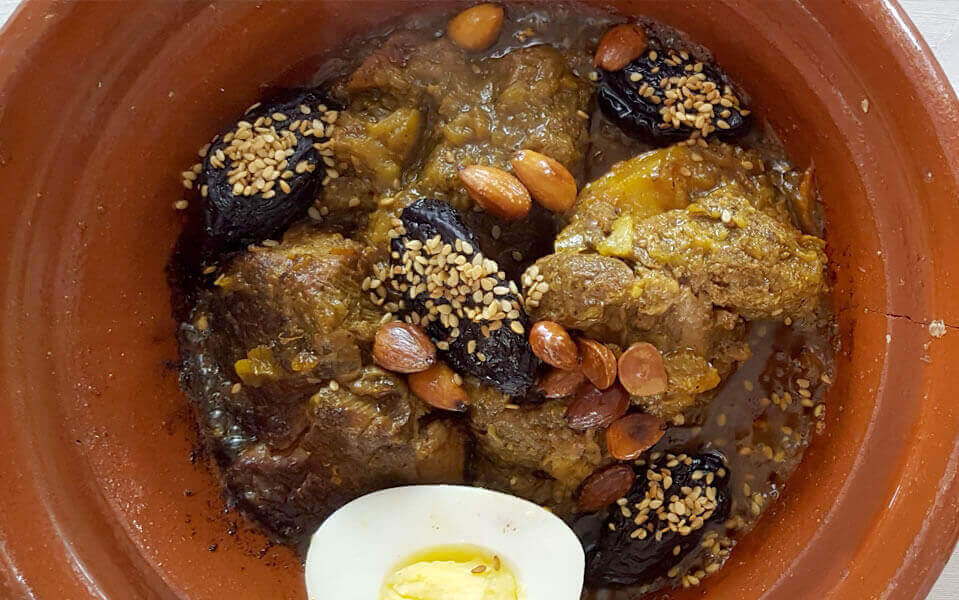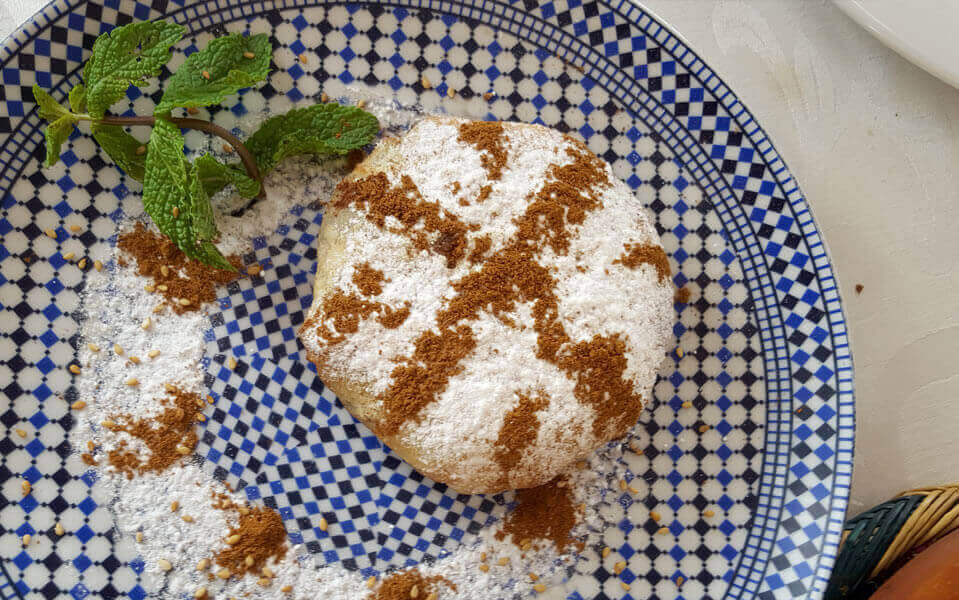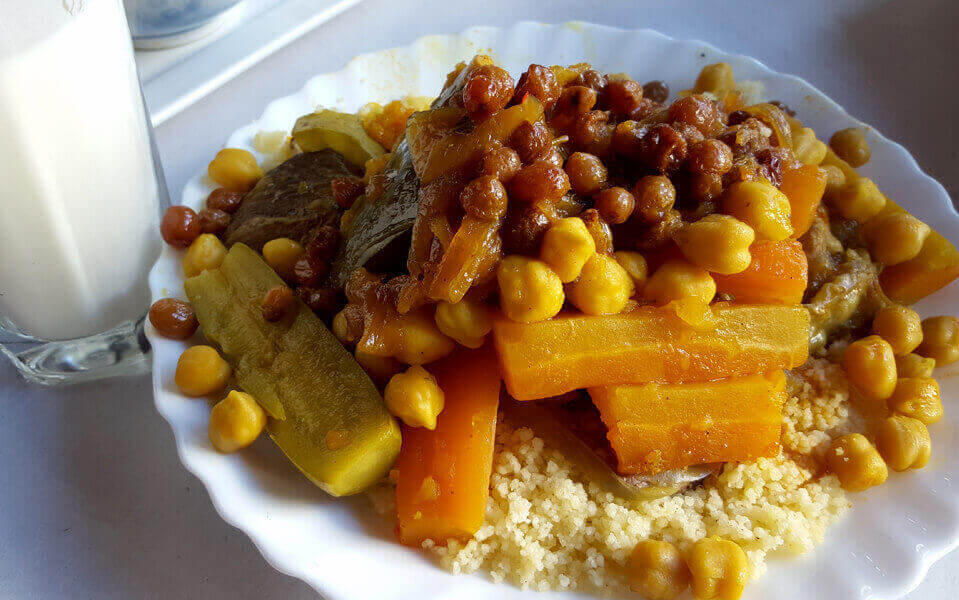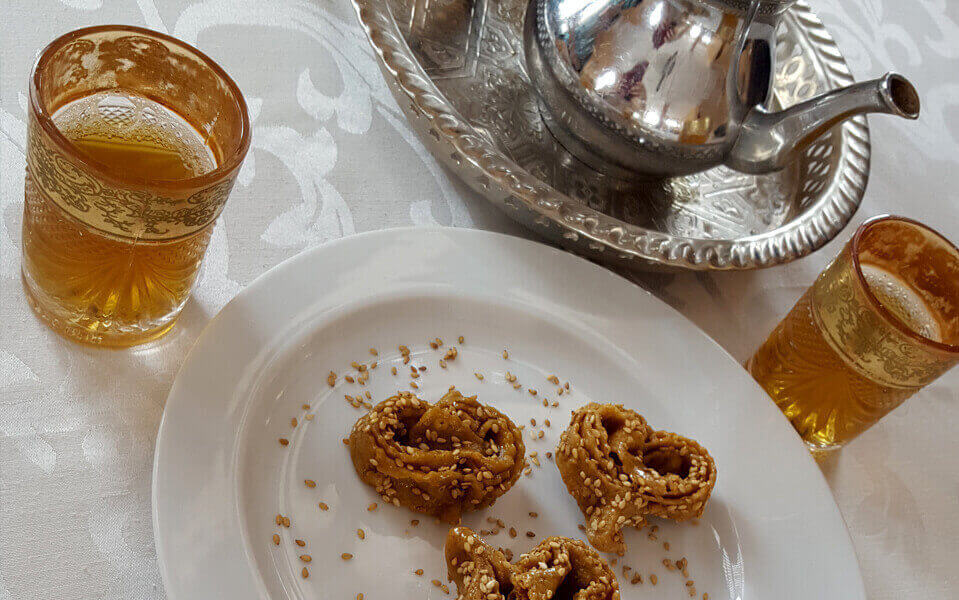The food in Morocco is fashionable
Gastronomy in Morocco is one of the attractions of your trip and it is fashionable. And it is that discovering a country through the taste is one of the most wonderful ways of appreciating its culture. It is for this reason that we have added this section to our Morocco Tourist Guide.
First of all, you should know that the tradition is to eat everyone from the same plate and with the right hand, accompanied by bread most of the time. But don't worry, in tourist places the individual dishes are adapted to the traveler.
We encourage you to discover the great variety of traditional food in Morocco and we recommend that, if you have the chance, do not miss out on trying these basics, the must try food in Morocco:
For starters, you can try tacktouka (roasted bell pepper with tomato) or roasted aubergine zaalouk as a Moroccan salad; or a salad of fresh tomato, green pepper, cucumber and onion, all chopped very small.
Then, try the main course. The typical dish par excellence in Morocco is the tagine, which takes its name from the clay container in which it is slowly cooked. It can be meat (beef) with plums and almonds, or chicken with lemon, to mention two of the most typical, but you can also order it just with vegetables.

If you wish it, the meat can also be grilled as skewers or brochettes. You can also order kefta, a kind of spiced meatballs with which tajine is also prepared.
In the north and along the Atlantic coast, enjoy a good fresh fish, fried or grilled, accompanied by some chips and the typical tomato sauce for the bread. The fish tagines are also worth it.
Another delicious option that we recommend you are the chicken or beef pastillas, minced meat wrapped in corn dough and sprinkled with cinnamon and sugar, and fish "pastillas". The briouats, which are similar, serve as a snack at any time.
In the soup section, you will find the famous harira, more than restorative, based on meat, chickpeas and lentils. The bissara made with dried peas is also a good alternative for the winter.

The traditional food in Morocco on Fridays is couscous (nothing like freshly made at home), usually of vegetables, with pieces either meat or chicken, to choose. In some places they are accompanied by sweet raisins and onions which, watered with broth, give them a very good sweet touch. With the couscous you can drink Lhben, a slightly sour fermented milk. If you dare to try it, you will savor the entire dish.
Desserts in the moroccan gastronomy are generally sweet with an almond base, sugared or with honey. We especially love the chebakias for their touch of anise and sesame.
Oranges, apples, strawberries, pomegranates, melon and watermelon and so many other fruits to enjoy depending on the time of year and area. But above all, you must try the desert dates!
And take advantage of the delicious and copious breakfasts to try all the types of bread and cakes that they offer you, and combine them with a good olive oil, or if it can be argan, honey or amlou (which is a mixture of argan oil with crushed argan nuts and honey), and olives.

Traditional food in Ramadan and always Moroccan mint tea
A note if you travel during Ramadan: The first meal on Ramadan days at sunset and after the prayer of the muezzin is the Ftour. A typical meal in Morocco would start with a couple of dates, the harira (soup), and perhaps a hard-boiled egg. Then to taste the msaman (oily pancakes) and baghrir (a kind of pancakes) both spread with honey or cheese, some chebakias or other honey sweets, an orange juice and Lhben fermented milk, to finish with a small kefta tagine ( minced meat) and some tea...energy, right?
Finally, remember that at any time, and not only after but during meals, it is good to stop and have a good mint tea. Ask for it without sugar, or separately if you prefer, and enjoy the entire ritual of its preparation.
Experiment. There are still many more dishes to taste to know all the food in Morocco!
